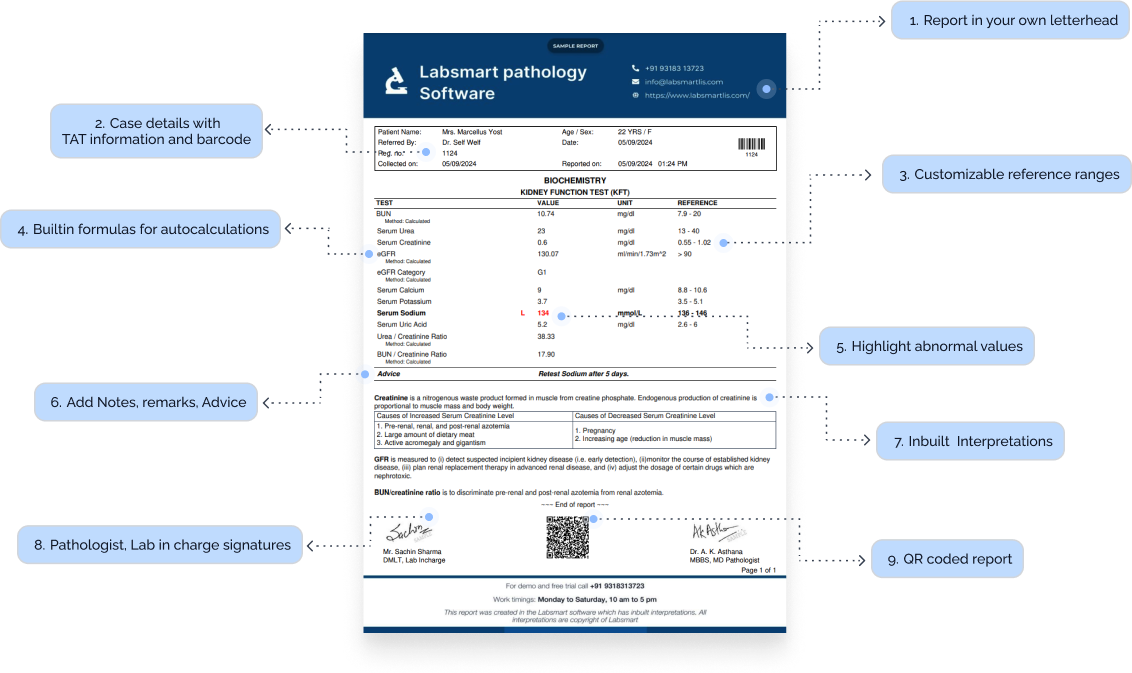
Join a free live demo now!
See all features live
Understand the benefits
Get your questions answered
No purchase pressure

What is Serum immunoglobulin E, IgE ?
The Serum Immunoglobulin E (IgE) test measures the level of IgE antibodies in the blood. IgE is a type of antibody produced by the immune system in response to allergens, such as pollen, pet dander, dust mites, and certain foods. High levels of IgE are often associated with allergic reactions and conditions like asthma, hay fever, and eczema. Clinicians may order an IgE test to: Diagnose allergies: Elevated IgE levels can indicate an allergic response to specific triggers. This test can help identify sensitivities to common allergens, such as food, environmental triggers (like pollen or dust mites), and insect stings. Evaluate asthma: IgE is often elevated in individuals with allergic asthma, where exposure to allergens leads to airway inflammation and difficulty breathing. The test can help determine if allergies are contributing to asthma symptoms. Assess eczema (atopic dermatitis): High IgE levels are often seen in patients with eczema, a skin condition triggered by allergic responses. Identify risk of anaphylaxis: In cases of severe allergies, elevated IgE levels may suggest a heightened risk of anaphylaxis, a life-threatening allergic reaction. Monitor the effectiveness of allergy treatment: IgE levels can be measured before and after allergy treatments to evaluate their effectiveness in controlling allergic responses.
Serum immunoglobulin E, IgE Report Format: Breakdown
Here’s what an ideal Serum immunoglobulin E, IgE report format should include:
Header Information:
- Patient Details: Full name, Age, Gender, and ID.
- TAT information: Timestamp for both sample collection and report generation.
- Doctor's Information: Name of the referral doctor, if applicable.
Test Results Section:
-
Patient's results
As obvious as it is, a test report should definitely have the patient's test result.
-
Result's Unit
The unit of the test result must be mentioned correctly in the report. Serum immunoglobulin E, IgE test is generally reported in “IU/mL”
-
Serum immunoglobulin E, IgE Normal Value / Reference Range
The report must have the normal Serum immunoglobulin E, IgE range. It can differ slightly based on the reagents used by the lab and other internal factors, but common Serum immunoglobulin E, IgE ranges are:
1 - 190
Interpretations
Nowadays, most labs prefer to add interpretations to the reports, making the report more patient-friendly. Labsmart software has interpretations of all routine test pre-filled in the software.
Footer Section:
-
Certifications:
Display any relevant accreditations (e.g., NABL, ISO), adding to your lab's credibility.
-
Pathologist and technician signature:
It's mandatory to add a Pathologist and technician signature to the report.
Serum immunoglobulin E, IgE Interpretation
In Labsmart software, this is the inbuilt interpretation for Serum immunoglobulin E, IgE
Importance of adding interpretation to reports:
It's very helpful to add interpretation in reports as it makes the reports more patient friendly and also helpful to doctors in some cases. Moreover, presently most labs prefer providing reports with interpretation. Thus, adding interpretation to report will help your lab stay at par with other competitor labs.
Labsmart Pathology Reporting Software
(With Interpretation and auto calculations)
- Billing
- Reports with Interpretation
- Auto calculation where needed
- Check daily business
- WhatsApp reports

1.5 Crore+
Reports printed & delivered online
1250+
Labs Active
10+
Countries
Serum immunoglobulin E, IgE MS Word format
Download the Ms word editable Serum immunoglobulin E, IgE report format for offline reporting.
Download word format



















